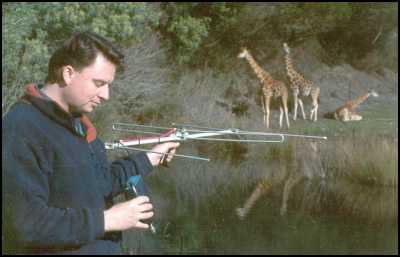Keeping Track With Technology

An innovative tracking device produced by Christchurch electronic research and development and design company, SPEDA, is likely to be keeping tabs on everything from big game to creepy crawlies.
The company has just completed the prototype phase of a synthesised wildlife tracking system that could help conservationists fine-tune their tracking, tracing and receiving skills.
Developed for Landcare’s subsidiary, Sirtrack Limited, the “DSP II receiver” product will be introduced to world markets at international conferences in August and September.
The Foundation for Research, Science and Technology assisted the research with funding of $39,000, through its Technology New Zealand scheme. Tony Hadfield, of the Foundation, says the research is particularly interesting because it not only impacts on the development of an innovative product, but also provides a platform for further technological growth for the company.
According to SPEDA’s Engineering Manager, Andrew Hunter, existing systems need hardware modifications to track different animals on different frequencies, whereas this one can be configured through a PC and set up to track 200 channels, or 200 different animals, with one unit.
The beauty of this product, he says, is the very wide band of frequencies that it covers, the flexibility it gives users to configure their receivers without any modifications and the ability to track and scan by group and provide an alert on the fieldworker’s receiver, when one of the identified animals is in range.
Other improvements are a longer battery life and superior receiver performance – a technological leap that Andrew Hunter says will be a welcome benefit to fieldworkers around the globe.
SPEDA has a strong history of research and development. “As well as providing hardware & software design consultancy services, we are making a real effort to move forward and develop products, like this wildlife tracking receiver, in partnership with our customers,” he says. “The technology behind the system was a big step forward for us and has increased our corporate Intellectual Property. We’ve also since looked at ways to use it elsewhere in other receiver designs.”
Hunter feels the clever technology will excite conservationists and he believes it to be the first move away from the conventional tracking receiver systems.
-ends


 Stats NZ: Livestock Numbers Fall Over The Last 10 Years While Area Planted In Fruit Increases
Stats NZ: Livestock Numbers Fall Over The Last 10 Years While Area Planted In Fruit Increases Moths and Butterflies NZ Trust: Tagged Monarchs Found
Moths and Butterflies NZ Trust: Tagged Monarchs Found Master Plumbers Gasfitters and Drainlayers NZ: 2025 New Zealand Plumbing Conference Awards - Full List Of Winners
Master Plumbers Gasfitters and Drainlayers NZ: 2025 New Zealand Plumbing Conference Awards - Full List Of Winners Insurance Council of New Zealand: Insurers Support Kiwis As Severe Weather Eases
Insurance Council of New Zealand: Insurers Support Kiwis As Severe Weather Eases Science Media Centre: What Goes Into Making Our Seasonal Flu Jab? – Expert Q+A
Science Media Centre: What Goes Into Making Our Seasonal Flu Jab? – Expert Q+A The Document Foundation: Celebrating 20 Years Of The OASIS Open Document Format (ODF) Standard
The Document Foundation: Celebrating 20 Years Of The OASIS Open Document Format (ODF) Standard